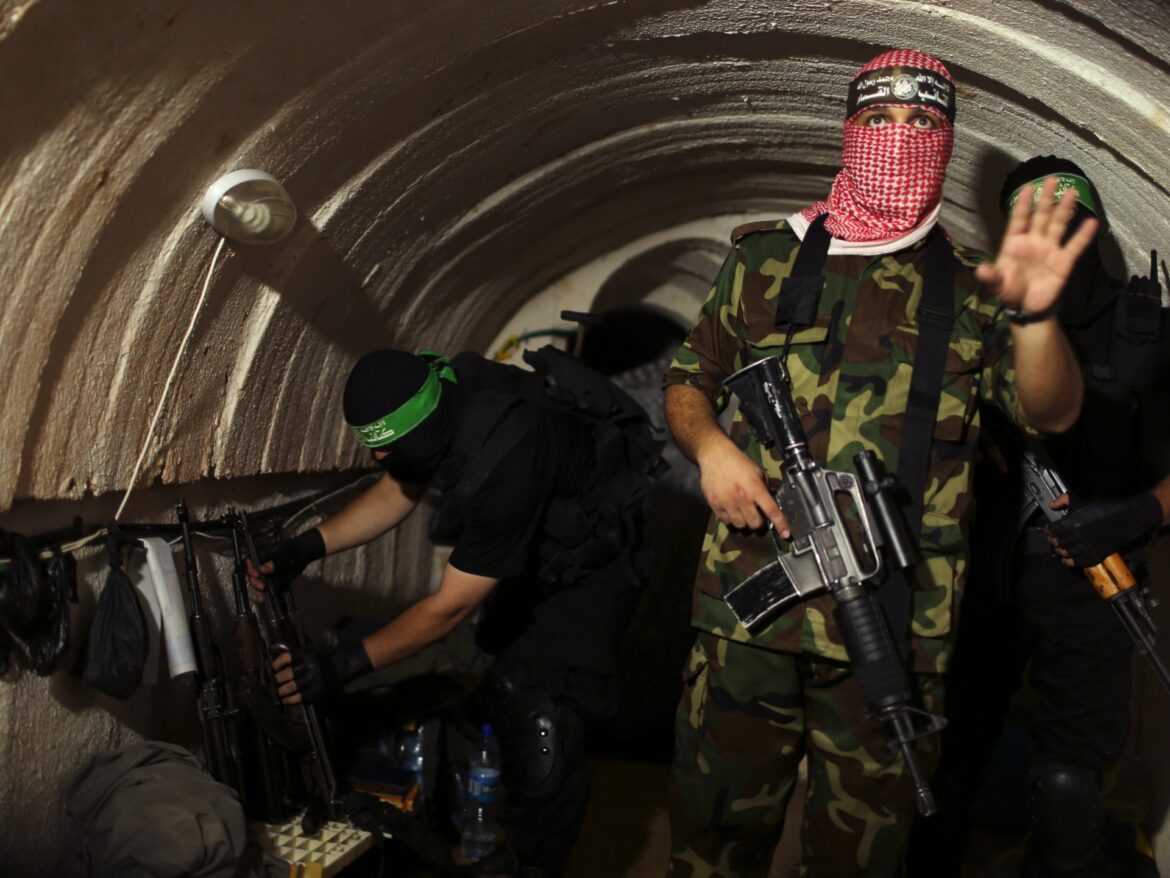A former NATO military commander said that the most important factor in the Israeli war on the Gaza Strip is not the missiles or the manpower possessed by the Islamic Resistance Movement (Hamas), but rather the tunnels dug underground, with a length exceeding 643 kilometers.
He added that Hamas, with the help of Iran, used these tunnels to train and equip its fighters, and from there it launched its attack on southern Israel on October 7, 2023.
In his analysis on the Bloomberg News website, James Stavridis, a retired U.S. Navy admiral and former NATO Supreme Allied Commander, reported that the Israeli military has now published a pamphlet issued by Hamas in 2019 detailing how the Palestinian movement has sought to maximize its combat capabilities, which it has “painstakingly” built underground and out of sight.
He explained that the movement trained its forces to fight in that dark environment in the ground with explosion-proof doors, using night vision goggles, GPS devices, and elaborate camouflage tactics. It also trained its forces to engage in a very short period of time. Hamas was thus able to create a battlefield completely different from traditional battlefields on the surface of the earth.
According to the author of the article in his analysis, it is not easy to believe that Hamas did this in a “unique moment of creativity” that reveals a new style of warfare, as the use of tunnels in wars has a long history.
The question today, Stavridis says, is how can new technologies enhance this old way of fighting? And what should the United States and its allies do?
Tunnels played a significant role in both World Wars I and II, says the author, who is currently vice president of global affairs at The Carlyle Group and a board member of Fortinet and Ancora Consulting Group.
In World War I, for example, Allied forces laid powerful explosive mines under German lines. In World War II, the Imperial Japanese Army built extensive tunnel networks on many of the islands it sought to hold against invading American forces.
Today, perhaps the most sophisticated system of tunnels for warfare is in North Korea, buried so deeply that even the largest conventional bombs or missiles may not penetrate them. They are also larger, more fortified, and filled with more advanced weaponry than those in Gaza.
Regarding the lessons learned from Israel’s war on Gaza, the author points out that, first, traditional intelligence systems must focus more on the tunnel systems in Iran and North Korea that hide the two countries’ nuclear programs. Likewise, the technical means used to monitor mobile phones and cyber networks must focus on what happens behind the scenes.
Tunnel warfare is “terrifying,” Stavridis concludes, and preparing for more of it is a crucial element of the battlefields of this century, adding that so-called “terrorists and rogue states” will consider applying the same approach to fighting underground.



